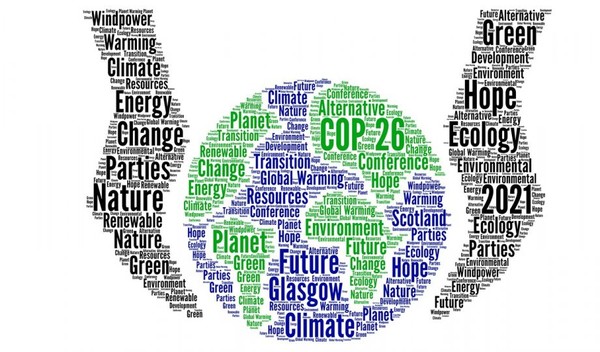COP26: The Critical Role of Climate Legislation
Climate change is the ultimate free-rider problem. As the 2021 UN Climate Change Conference, COP26, concludes, a clear roadmap to the realization of net-zero emissions by 2050 is still not in sight. In this Spotlight, we cover the history of the most significant global climate conference and highlight the need for concrete legislation in every country to ensure that emission targets would be met.
Over 30,000 delegates gathered in Glasgow for the 26th Conference of The Parties to the UN Convention on Climate Change (COP26). COP, the annual climate conference organized by the United Nations (UN), brings together world leaders, high government officials, climate change activists, and fossil fuel organizations for an extensive meeting on the global climate crisis. COP26 comes at an extremely important time. Since the beginning of the new decade, there have been numerous wildfires and floods from different corners of the world. A report published by the UN in August warns that the globe is warming at an alarming rate beyond what was previously predicted. Scientists also report that this decade could make or break our planet’s climate. With all the signs of a climate catastrophe, there is immense hope that COP26 will lead to concrete plans to materialize and build on the past climate agreements.

COP, held since 1995, is now attended by nearly 200 nations and territories. One of the earliest summits, COP3, held in Kyoto in 1997, resulted in one of the most widely known climate change agreements: the Kyoto Protocol. The Kyoto Protocol, ratified in 2005 and signed by 192 nations and territories, was the first legally binding agreement aimed at reducing the global emission of greenhouse gases. The protocol considered developed nations as the primary culprits of greenhouse gas emissions and therefore extended its binding laws only towards them. Developing countries were not under binding obligations. The Kyoto protocol was a great stepping stone towards global cooperation against climate catastrophe. However, with a key emitter, the US, opposing the agreement and high-emitting developing countries like China and India under no obligation to cut down on emissions, the protocol was not as effective as it was hoped to be. However, the foundations laid in the process led to the next big climate agreement, the Paris Accords.
The Paris Agreement, introduced in COP21 in 2015, was a major improvement in a unified global climate cooperation. The main objective was to keep the rise in global temperature levels below 2, preferably below 1.5, degrees Celsius compared to pre-industrial levels. Another major goal was to reach net-zero emission levels by 2050. Here, even developing nations were encouraged to adhere to the Paris Agreement albeit to varying levels. The Paris Agreement focuses on encouraging countries to incorporate climate actions in their national plans, in contrast to the Kyoto Protocol which focused on adhering to set emission targets. Nationally Determined Contributions (NDCs) are such domestically set targets, and countries are required to submit increasingly ambitious plans every five years.
Climate experts argue that one of the major reasons previous agreements did not bear fruit was the lack of proper direction. There are so many topics that need to be addressed when it comes to climate discussions and if there is no clear plan followed, it is easy to get lost. Talks on the climate catastrophe raise topics such as energy, international development, equity and fairness, environment, technology, poverty, and more. Unless this wide range of issues are divided into categories that can be tackled realistically, the mistakes committed before are likely to be repeated. Governments have been kicking the can down the road for as long as they can and have now reached the end of the road. A promise of net-zero emissions without a properly followed plan of action from all parties involved will not work. The hope now is that COP26 will lead to governments coming up with solid plans to make the goal of net-zero emissions by 2050 a reality, for failing to do so would cause irreversible harm to our climate. As Sir David Attenborough stressed in the opening days of the conference, we are “the smartest species doomed by failing to see the bigger picture in pursuit of short-term goals”. The time for change is now and the younger generation, who will have to bear with the decisions made in COP26, is eagerly watching.

